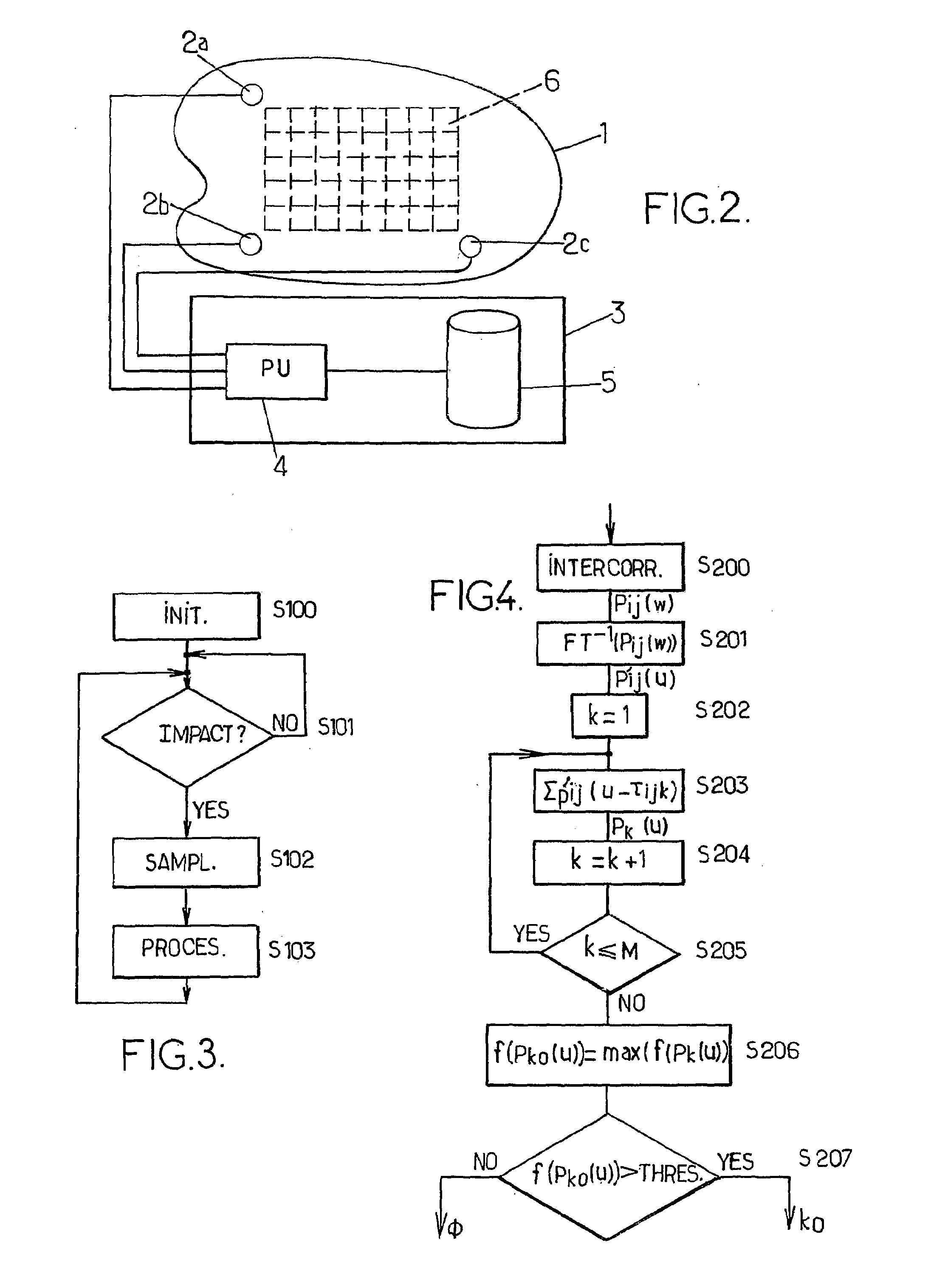Method For Determining The Location Of Impacts By Acoustic Imaging
a technology of acoustic imaging and impact location, applied in the direction of instruments, material analysis, processing detected response signals, etc., can solve the problems of synchronization problems in the processing unit and failure to determine the location of impacts
- Summary
- Abstract
- Description
- Claims
- Application Information
AI Technical Summary
Benefits of technology
Problems solved by technology
Method used
Image
Examples
first embodiment
[0066]Then, in step S201, inverse Fourier transforms of the Pij(ω) are computed. the object material is non dispersive. This means that the wave propagation velocity of an acoustic signal does not depend on the frequency of this signal. In consequence, the waveform of a sensed signal propagated in this material is substantially equals to the original signal delayed of a delay which is a function of the material velocity and the distance between the source and the sensor. In this case, the inverse Fourier transform may be a usual inverse Fourier Transform or an inverse Fast Fourier Transform.
[0067]At step S202, k is initialized to 1 in order to carry out thereafter the computation of the sum Pk(u)=Σp′ij(u−τijk) (S203) for each area k of the surface, where p′ij(u) is the inverse Fourier transform of Pij(ω). In the current case of non dispersive material, τijk are delays based on the difference between respectively the distance from the area k to the sensor i and the distance from the...
second embodiment
[0081]However, in the case of dispersive material, a second embodiment is provided by the invention. The main difference in this embodiment is that the inverse Fourier transform of step S201 is a dispersion compensate Fourier transform. Indeed, a dispersive material is a material in which an acoustic signal propagation velocity depends on the frequency of the signal. In consequence, the waveform of a sensed signal propagated in this material is different from the original signal waveform. In this case, the dispersion compensate Fourier transform, as explained below, has to compensate the deformation of the signal due to propagation.
[0082]According to the proceeding of the Review of Progress in Quantitative Non-Destructive Evaluation entitled “A signal processing technique to remove the effect of dispersion from guided wave signals” from P. D. Wilcox & al, it is possible to determine the distance of the source a sensed acoustic signal with help of the following formula:
h(x)=∫-∞+∞G(ω)...
PUM
 Login to View More
Login to View More Abstract
Description
Claims
Application Information
 Login to View More
Login to View More - R&D
- Intellectual Property
- Life Sciences
- Materials
- Tech Scout
- Unparalleled Data Quality
- Higher Quality Content
- 60% Fewer Hallucinations
Browse by: Latest US Patents, China's latest patents, Technical Efficacy Thesaurus, Application Domain, Technology Topic, Popular Technical Reports.
© 2025 PatSnap. All rights reserved.Legal|Privacy policy|Modern Slavery Act Transparency Statement|Sitemap|About US| Contact US: help@patsnap.com



